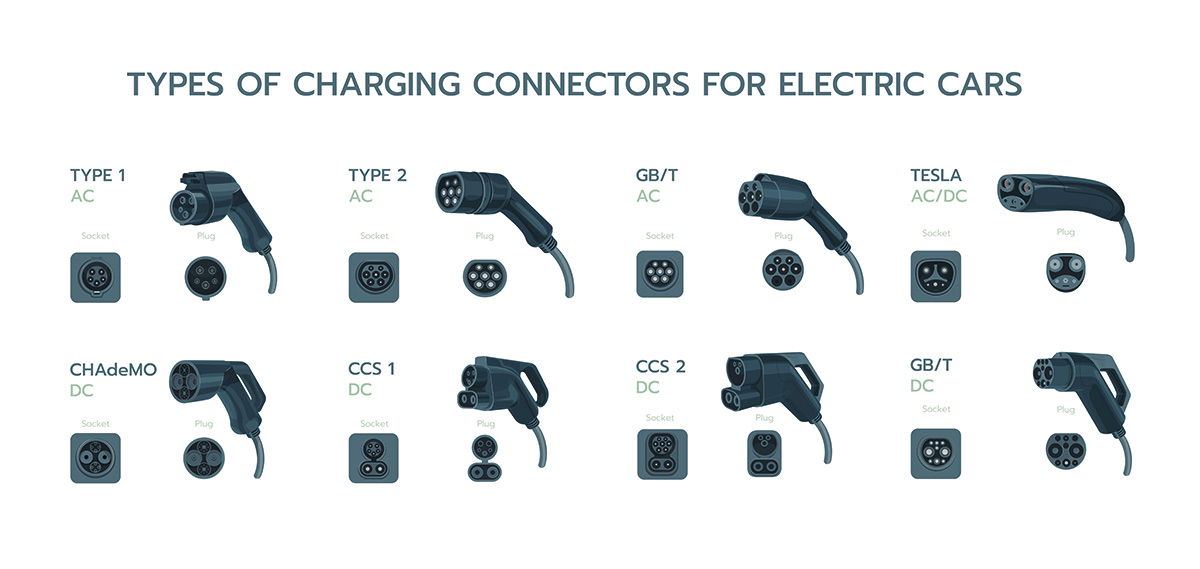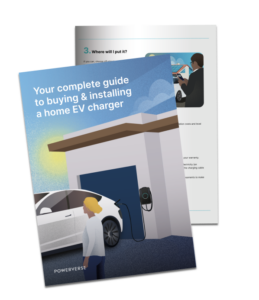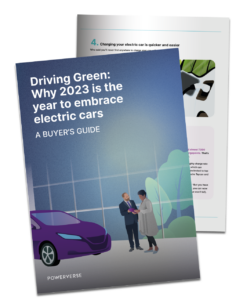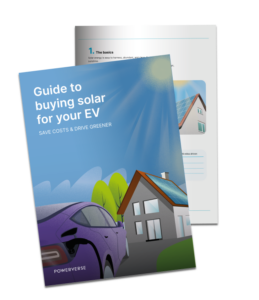
How the switch to electric is changing the way we buy cars
7 August 2023
Go green & save: 3 ways to charge your EV for less
1 September 2023EV jargon buster: Essential EV terminology from chargers to EMS
When it comes to EVs and EV chargers, the jargon is enough to make your head hurt. PHEV, BEV, amperes, kilowatt-hours, EMS… Who has the time to learn the EV terminology just to get a new car?
Now you don’t have to. We’ve compiled all the essential EV terminology you’ll ever need to understand, evaluate, buy, charge, and maintain your EV — all in one place. It’s as easy as A (Ampere), B (Battery storage), C (Chargepoint)!
Bookmark this page and come back to it as often as you need. We’ll keep it up to date.
- Electric vehicles
- Electric vehicle charging
- Energy and cost management
- Government grants
- EV acquisition and maintenance
- Impact on the environment
- Other key terminology
Electric vehicles
Electric vehicle (EV): A blanket term used to describe all types of EVs, BEVs as well as PHEVs. In some cases, it is used to refer to BEVs as opposed to hybrid vehicles or PHEVs.
Battery Electric Vehicle (BEV): Purely electric vehicle, powered by an electric motor and battery. It doesn’t have an internal combustion engine.
Plug-in Hybrid Electric Vehicle (PHEV): Also known as hybrid vehicle, this EV runs on both electricity and petrol. Its battery pack can be charged by plugging it into an external source of electricity or by its onboard internal combustion engine-powered generator.
Hybrid Vehicle (HV): This is a vehicle that is entirely gasoline-fueled but doesn’t rely solely on its gasoline engine. It has an electric battery, smaller than that of a PHEV. The car charges it when you brake and then uses that energy to drive. This way, it reduces the load on the petrol combustion engine and saves you fuel. An alternative type of hybrid is where the electric motor propels the car and the engine simply generates electricity.
Plug-in vehicle (PiV): A term used to refer to both BEVs and PHEVs.
Fuel Cell Electric Vehicle (FCEV): Also called fuel cell vehicle (FCV), this is an EV that runs on a combination of hydrogen stored in a fuel cell and oxygen.
The key difference between a FCEV and an ICEV is that a normal ICE vehicle generates (and wastes) heat and produces emissions as it burns the fuel. A fuel cell, on the other hand, performs a chemical reaction to produce electricity (using oxygen and compressed hydrogen).
FCEVs emit only water vapour as exhaust, making them the cleanest form of vehicle propulsion available, alongside BEVs.
However, due to limitations of hydrogen infrastructure and the size of the hydrogen storage tanks, most manufacturers have refocused from FCEVs to BEVs.
Zero emission vehicle (ZEV): A vehicle that doesn’t emit exhaust gas or other pollutants. All ZEVs are EVs, but not all EVs are ZEVs. That’s because PHEVs don’t quite fall within the category (because they can run on gas, too). So the only ZEVs currently on the road are BEVs and FCEVs.
Internal combustion engine (ICE): A type of engine used in traditional petrol or diesel-powered vehicles.
Internal combustion engine vehicle (ICEV): A vehicle that uses ICE. ICEVs typically run on fuels derived from fossil fuels (petrol and diesel), although they can also use alternative fuels, such as natural gas, propane, biodiesel, and ethanol.
[advert]
Electric vehicle charging
Battery range: How far an EV can travel with a full battery (in other words, on a single charge).
Kilowatt-hour (kWh): A unit of measurement used to calculate energy consumption and storage in a batter. It measures the amount of energy used (calculated in kilowatts (kW)) in one hour.
Volt: A volt (V) is a unit of measurement used to describe electrical potential — voltage. It can be described as a pressure that enables the flow of electrons in a conductor or closed electric circuit.
Ampere (A) or amp is a unit of measurement used to calculate the rate of electron flow (current) in an electrical conductor per second.
EV charger: The device that supplies electric energy for charging an EV’s battery.
EV chargepoint: Also known as EVSE or EV charging point, an EV chargepoint is the physical system that allows an electric vehicle to be charged. It encompasses an EV charger, one or more connectors, and a user interface — software — to manage charging.
Other commonly used terms referring to an EV chargepoint are:
- Charging outlet
- Charging port
- Charging plug
Dumb charger (sometimes referred to as a Granny charger!): A charger that comes with an EV-specific plug socket. You plug it in, it sends electricity to your car. Dumb chargers will be slowly phased out as the UK government’s smart chargepoint regulation mandates that all newly installed chargers must be smart.
Smart charger: A charger that has an EV-specific plug socket as well as a network connection. That means it can collect and share data like your electricity usage and EV charging status.
Importantly, not all smart chargers are made equal. Some can be categorised as ‘very smart’ as they come with additional capabilities like:
- Automatically sets charging schedules for maximum cost-efficiency (as opposed to setting them up manually)
- Smart electricity management system monitoring and optimising your energy use
- Capability to take electricity from solar panels and other alternative energy sources
- And more.
For a full comparison of smart vs very smart chargers, download Your complete guide to buying & installing a home EV charger.
Tethered chargepoint: A chargepoint that comes with a charging cable fixed to the charging point. All you need to do is plug the other end into your car.
Untethered chargepoint: Also known as a universal chargepoint, untethered chargepoint comes without a charging cable attached to the charging station. You have to buy the cable separately.
While not as simple and straightforward as a tethered chargepoint, an untethered one gives you more options. For example, if one day you change to a car with a different connector, you can simply switch the cable without having to replace the whole charging unit.
Type 1 charger: Also called Level 1 charger, these are Alternating Current (AC) connectors for slow charging (120V), typically using a 3kW to 7.5 kW 3-pin plug. A type 1 charger works with the same wall outlet you use to charge your phone or laptop. It also takes the longest to charge an EV.
Most EV models are compatible with type 1 charger (except Tesla which uses their own proprietary charging plug).
Type 2 charger: Also called Level 2 charger, it has a 7-pin plug for slow/fast AC charging (240V). This is the most common type of EV charging connector you’ll find in public charging stations — and the one generally recommended for faster home EV charging.
Type 3 charger: Also called Level 3 charger and DC rapid charger, it delivers by far the fastest charging experience (400-900V). Type 3 charger isn’t generally recommended for home use and may not be compatible with your EV model.
Type 3 charger uses one of the following types of charging ports:
- CHAdeMO
- CCS
- Type 2 Tesla charging port
CHAdeMO: The abbreviation stands for ‘CHArge de MOve’ or ‘charge for moving’. This is a type of connector that is used for Level 3 / DC / rapid charging. It has been most commonly used among Asian brands like Mitsubishi and Nissan. Recently, however, there has been a shift towards CCS charging (in Nissan Ariya, for example).
Combined Charging System (CCS): Most auto manufacturers use CCS (with the notable exception of Tesla which has its own setup). CCS has the same plug as Type 1 and Type 2 chargers, as well as two additional DC pins to support higher electrical current.
The EU has adopted CCS as the standard for fast DC charging. That means you can expect to see it in more (if not all) EVs sold across Europe.

Alternate current (AC) charging: AC charging means you’re charging a system inside your EV. The car has a converter built in that transforms AC power (as it comes from the grid) into DC power, which is then sent to the EV’s battery.
Direct current (DC) charging: With DC charging, the converter is already inside the charger. That means DC power goes straight from the charger to the EV’s battery without the additional step of inverting AC to DC inside the car. This makes it a much faster method of charging.
Slow charging: A type of AC charging that uses a power output of 3.6kW. It is best for overnight charging.
Fast charging: A type of AC charging that typically uses a 7kW plug. It is also known as Type 2 or Level 2 charging (referring to the Type 2 charger).
Rapid charging: Also referred to as Level 3 or DC charging, it tends to have a power output of 50 kW or above. The maximum charging speed, however, depends on the EV model’s capacity.
For comparison, charging a 2018 BMW i3 with a 42.2 kWh battery from 0% to 80% (the recommended amount) would take:
~12 and a half hours to charge on a 3kW (slow) charger
~5.5 hours on a 7kW (fast) charger
~1.5 hours on a 22kW (rapid) DC charger
Electric Vehicle Supply Equipment (EVSE): It is the full set of equipment used to charge an electric vehicle. That includes:
- EV charger
- Electrical conductors
- Communications protocols that deliver energy to the vehicle
- Software
- Other related equipment
All EVSE equipment needs to meet an international standard for EV charging equipment — IEC 61851-1. This means that you can be assured of the safety of this equipment as well as interoperability between cars and chargers.
Your complete guide to buying & installing a home EV
Energy and cost management
Load management: The process of balancing the supply and use of electricity to ensure a stable and efficient power grid. Effective load management helps not only ensure your safety but also improve energy efficiency and reduce costs.
Energy Management System (EMS): A software and hardware solution that helps you monitor, control, and optimise energy consumption.
A top-level EMS collects real-time data on various energy sources (electricity, gas, water, solar), energy usage and prices, weather conditions, and more to determine the best ways to cut energy bills, improve your energy efficiency and even impact on the environment.
Dynamic pricing: A pricing model where the cost of EV charging changes along with electricity prices. This is an optimal solution for apartment block managers who wish to encourage residents to charge their EVs during off-peak hours.
Time-of-use tariffs: A pricing system that offers different prices for energy at different times of the day. In this system, prices are generally lower when there electricity use is lower (during off-peak hours) and when there is more renewable energy generated.
Static time-of-use tariffs: A time-based tariff structure that offers fixed electricity rates at specific times of the day and week. Typically, lower rates are offered during the day and overnight as compared to weekday evenings.
Dynamic time-of-use tariffs: A time-based tariff structure that offers different energy prices at different times of the day. Unlike static time-of-use tariffs, these aren’t fixed and can vary during the day. For example, electricity prices will go down when there’s less use of electricity and more wind generating renewable energy.
Pay-per-use pricing: An EV charging pricing system where residents pay only for the electricity consumed. This model is well-suited to cover EV chargepoint installation and maintenance costs in apartment blocks.
AI-managed pricing: An EV charging pricing approach for apartment blocks that combines different billing models. With the use of an AI-powered EMS, EVs can be set to automatically start and stop charging as electricity costs change and consumers pay only for the energy used.
Powerverse solution for apartment blocks, for example, allows residents to pay for an EV chargepoint only if they want it. And it’s theirs to take if they move away.
Tariff switching: The process of changing energy tariffs and suppliers to get cut down costs.
EV efficiency: The efficiency with which EVs convert electricity into movement. EVs are much more efficient than ICEVs as they don’t need the extra step of burning fuel and creating heat to move.
Comparing efficiency
ICEV: 12%–30%
FCEV: 22%
EV: 77%/b>
Source: US Department of Energy, Institute of the Motor Industry
Driving Green: Why 2023 is the year to embrace electric cars
Government grants
EV chargepoint grant if you own or rent a flat: A government grant for both EV owners and those who have an EV on a lease* can apply. With this grant, you can claim £350 or 75% off the cost to buy and install a home EV chargepoint (whichever amount is lower). More details here.
*Under certain conditions
EV chargepoint grant for landlords: An EV chargepoint installation grant for commercial and residential landlords (different criteria apply). It allows property managers to save £350 or 75% off the cost to buy and install a socket, whichever is lower. More information here.
EV infrastructure grant for landlords: A grant that helps you save on the cost of EV chargepoint installation, including additional infrastructure costs like wiring and posts. Commercial landlords as well as those managing flats, houses, apartment blocks, or business premises in the UK can apply.
The grant allows you to claim:
- Up to 30 infrastructure grants per financial year
- Up to £30,000 or 75% off the cost of the work (depending on the number of parking spaces covered)
More information here.
Plug-in grant: A government grant that sellers of EVs and low-emission vehicles can apply for in order to add discounts on these cars.
Government grants for EV chargepoint installation in apartment blocks & commercial properties
EV acquisition and maintenance
Solar power: The use of the sun’s energy to power your EV and other devices and appliances that need electricity to function. Using solar panels, the sun’s power is transformed into electricity or heat.
Solar panels: Devices made from silicon or another semiconductor material installed in a metal panel frame with a glass casing. When this material is exposed to sunlight, it releases electrons and produces an electric charge. This charge creates an electric current (DC), which is captured by the wiring in solar panels. Using an inverter, DC is converted into AC that you use to power your home.
Tyres-as-a-service (TaaS): A subscription service that covers the acquisition of tyres, their replacement, maintenance, and performance guarantees. Instead of upfront costs and uncertainty about direct and indirect costs, customers pay a monthly fee for all tyre-related services.
TaaS tends to focus on improving road safety, emission reduction, and driving cost and energy savings.
Guaranteed asset-protection: An insurance that covers the difference between the car’s value and outstanding financing in the case of a total write-off.
Lease: A contract that allows you to lease a car for a set amount of time. At the end of the lease, you typically have the option to buy the car, trade it in for a new model, or return it to the lender (most often, a car dealership).
Subscription: This is a new way to lease a car. Rather than buying or leasing the vehicle for a fixed length of time, you can pay a monthly subscription fee and access it for as long as you need. Subscriptions often include a variety of additional perks, such as flexible terms, insurance, and maintenance.
Vehicle tax: Also known as Vehicle Excise Duty, this tax applies to most cars, vans, and motorcycles registered in the UK. The amount of the tax payable depends on several factors, including the type of vehicle, its CO2 emissions, and the year it was first registered. PHEV owners need to pay the tax, while most BEV owners will be exempt.
Over-the-air (OTA): OTA means your EV software can be checked and updated remotely, using WiFi. A lot of the maintenance will no longer require a trip to the auto dealer or service centre.
Regenerative braking technology: A mechanism used in EVs, including hybrid vehicles, that captures the energy created when a vehicle brakes and stores it in the EV’s battery, to be reused. This technology has many benefits:
- Higher energy efficiency
- Extended battery range
- Reduced wear and tear on brake pads
- Reduced emissions
Impact on the environment
Greenhouse gases (GHG): The function of GHG is to trap some of the heat generated by the sun in the earth’s atmosphere, essentially acting like the glass walls of a greenhouse. Without GHG, the earth would quickly become too cold to inhabit.
Human activity, however, has dramatically increased the amount of GHG in the atmosphere, which has led to the greenhouse effect and global warming.
There are two types of the main GHG:
- Naturally produced (found in nature though currently in increased concentrations due to human activity)
- Carbon dioxide (CO2)
- Methane
- Nitrous oxide
- Water vapour
- Entirely human-made
- Hydrofluorocarbons (HFC)
- Perfluorocarbons (PFC)
- Sulphur hexafluoride (SF6)
Noise pollution: An excessive level of noise that interferes with normal activities such as sleeping and conversation, or disrupts the environment.
Noise pollution is caused by traffic, construction, industrial work, and other activities.
It can be damaging in numerous ways. Depending on the length of exposure and the level of noise, it can cause:
- Hearing loss
- Sleep disruption
- Reduced productivity
- Stress-related illnesses
- Cardiovascular diseases
- Increased blood pressure
20% of Europe’s population
are exposed to long-term noise levels that harm their health.
Source: EEA
In nature, it can:
- Disrupt migration and navigation patterns at the risk of potential population declines
- Lead to wildlife changing habitat, limiting their access to resources and disrupting ecological balance
- Interfere with animal sounds, causing disruptions in hunting, social behaviour, and reproductive success
- Damage physical and mental health, including suppressed immune function, reproductive problems, and reduced survival rates
Exhaust particle fumes: The emissions released from ICE vehicle exhaust during the combustion of fuel in engines. Exhaust fumes are a major factor in long-term chronic and respiratory illnesses, including childhood asthma, and one of the main reasons behind the creation of ULEZ and Clean Air Zones.
Land waste: Leaks and spills from oil and fuel in ICEVs. These are toxic liquids that can get into the ground and water sources, damaging entire ecosystems.
Guide to buying solar for your EV
Other key terminology
Ultra Low Emission Zone (ULEZ): ULEZ were created in London to reduce the level of harmful pollutants generated by vehicle emissions. Vehicles that don’t meet certain emissions standards are discouraged from entering ULEZ with the application of a daily charge (currently £12.50) to drive within the zone.
All PHEVs and BEVs meet the required emissions standards.
Clean Air Zones (CAZ): Areas that restrict the most polluting vehicles (those that exceed set minimum emission standards) from entering. Vehicles that do not meet CAZ standards are often charged to enter the area. CAZ are becoming increasingly common in cities around the world as a way to reduce air pollution and its negative impact on public health.
Range anxiety: The fear of running out of charge before reaching an EV chargepoint. Range anxiety has long prevailed as one of the top concerns of potential EV buyers. Today, however, with advances in technology and EVs with battery range of as much as 452 miles, range anxiety is rapidly becoming a thing of the past.
Charging anxiety: The fear of not being able to charge an EV, either because there isn’t an EV chargepoint in the vicinity or because it may not work or require hours of queuing.
Office for Zero Emission Vehicles (OZEV): Part of Department for Transport and Department for Energy Security and Net Zero, OZEV supports the transition to zero emission vehicles, from helping the development of such technology to managing chargepoint infrastructure grants.
About Powerverse
We’re industry experts in home energy management. Our easy-to-use app is built for your future electric home. It will effortlessly sync your solar, battery, heat pump, EV charger and more, helping you cut costs and your carbon footprint on your way to becoming energy-independent. Curious to know more? Talk to one of our experts.





